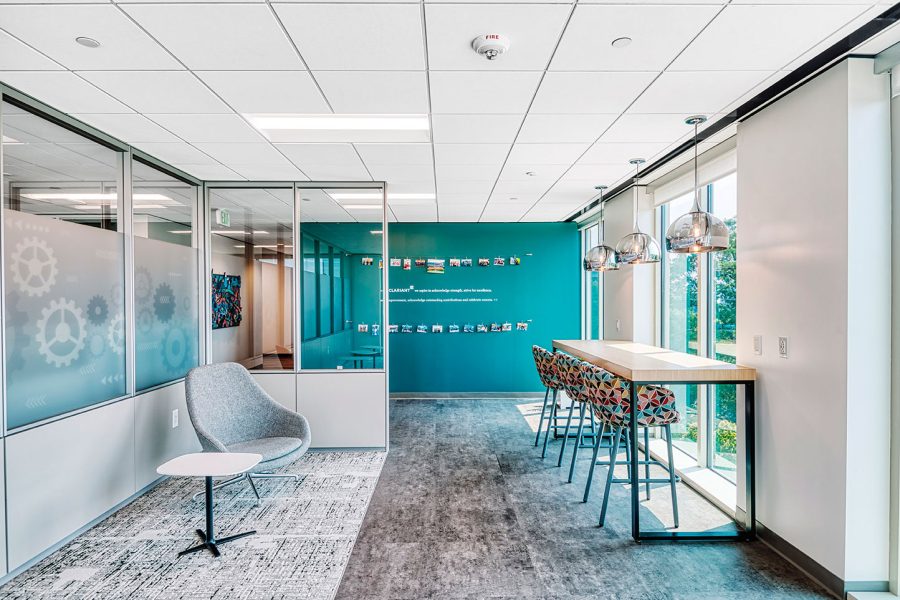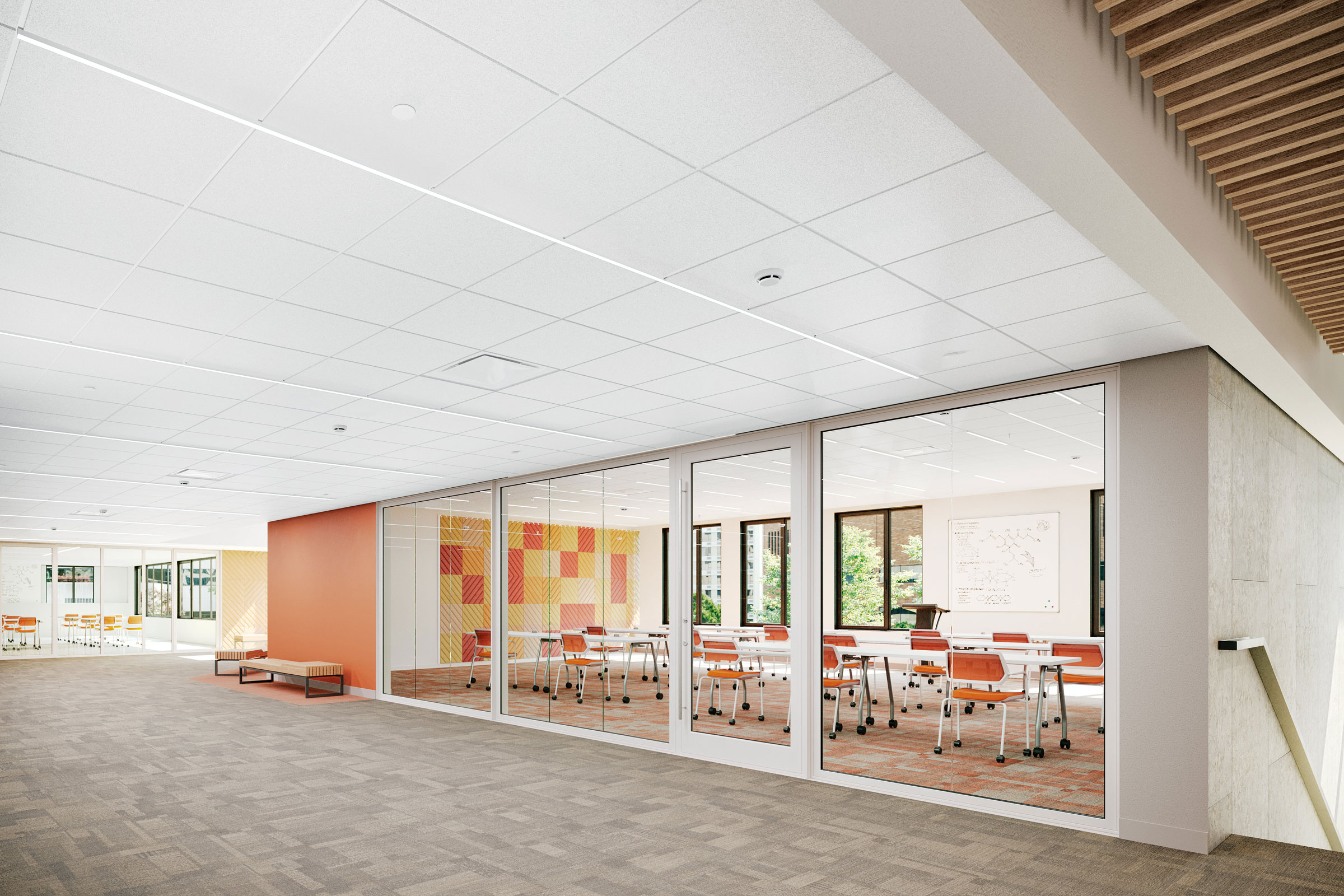Story at a glance:
- Armstrong reduces both embodied and operational carbon by producing low-carbon mineral fiber ceiling panels and exploring ways to save energy during a building’s operational life cycle.
- At Winnacunnet High School Armstrong’s energy-saving ceiling panels reduced heating usage by 9%, demonstrating their potential to complement decarbonization efforts in older buildings.
The building sector should aim to reduce carbon emissions 65% by 2030 to prevent the onset of irreversible climate change, according to Architecture 2030.
Often these reductions are achieved by reducing energy consumption at the point of use. For instance, more efficient HVAC systems are installed, or electrification is implemented to phase out fossil fuels and gas.
However, building materials and their associated life cycle carbon emissions are important as well, with construction materials estimated to generate more than 11% of worldwide greenhouse gas emissions.
That’s why utilizing materials with low embodied carbon—a term used to describe the accumulated life cycle emissions from manufacturing, transportation, installation, maintenance, and end of life of building materials—is so important, according to Mick Dunn, technical sales manager at Armstrong World Industries.
“Armstrong has always been quite focused on this topic. The production of mineral fiber tiles and ceiling products generally lends itself to sustainable feedstocks of material, and since our early days we have had a high drive toward recyclable components,” Dunn says. “In more recent times there’s been a heavy focus on making sure all of our products are achieving the lowest embodied carbon possible across our portfolio, which we make transparent to the marketplace in the form of environmental product disclosures.”
Embodied Carbon Vs. Operational Carbon

Armstrong’s Ultima Templok ceiling panels use a phase change material to help regulate indoor temperature passively. Photo courtesy of Armstrong World Industries
Armstrong’s Ultima® low embodied carbon mineral fiber acoustical ceiling panels meet stringent industry sustainability compliance standards. But Armstrong doesn’t limit itself to merely reducing embodied carbon. In recent days they’ve increasingly expanded their suite of products to include those that also reduce operational carbon—the emissions associated with energy used to operate a building.
“Most construction products just sit there and look nice, or perhaps provide some other benefit such as acoustics, and we do deliver on those issues,” Dunn says. “But more recently we’ve begun paying more attention to the operational side of products to explore what we can do to turn ceilings into something that’s saving energy and reducing the operational life cycle of a building.”
This is important because in opting to use ceiling materials with lower embodied carbon, building projects sometimes have to accept certain increases in operational carbon. Because heavier materials like concrete and brick have a high thermal mass, they are highly effective at absorbing heat, allowing them to act as a thermal reservoir. When these materials are replaced with mineral fiber tiles, there can be some loss of insulation.
Phase Change Materials for Decreasing Operational Carbon
To counteract this Armstrong’s Ultima Templok ceiling panels use a phase change material to help regulate indoor temperature passively. The term may sound obscure, but consumers are already familiar with the technology, which is used in many common applications—including temperature-regulating mattresses, cooling food and drinks, activewear, temperature-sensitive prescription delivery, and more.
Dunn says phase change materials naturally absorb heat as the air above and below the ceiling warms up during the daytime and releases it as the temperature falls at night when the space is unoccupied. This means buildings can use less peak energy during summer afternoons or winter mornings, reducing overall energy consumption. This makes phase change materials especially useful in climates with strong demands for heating and cooling, like the northeastern US. In addition, regions with high energy costs, like California or New York, may benefit from using phase change ceiling tiles since they have a strong economic—as well as environmental—incentive to reduce energy consumption.
Case Study: Winnacunnet High School

Photo courtesy of Armstrong World Industries
One particular example is Winnacunnet high school in New Hampshire, a site that installed Templok energy-saving ceiling panels to reduce its carbon footprint.
Winnacunnet had a high level of metering across its 10 to 15 classrooms, and Armstrong was able to install energy-saving tiles in a select portion of them to measure against those that remained as they were. Ultimately the rooms with Templok panels achieved a 9% reduction in heating usage without any changes to the controls or HVAC system in the facility.
“We’re seeing a heavy trend toward the decarbonization of buildings as well as the electrification of buildings. That means we take large or small buildings and switch them from gas or fossil fuel based heating and hot water production and transition them to being all electric. This can be a real challenge when we’re dealing with older buildings that might require substantial upgrades in order for electric-based heating and cooling to satisfy those loads,” Dunn says. “Anything you can do that has low impact is complementary and beneficial. In the case of a ceiling system, you have the opportunity to reduce the demand on something like a new heat pump system that’s getting put into a building because you’re adding thermal storage in the form of a passive system in the ceiling.”


